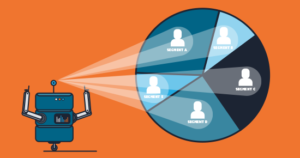Successful Marketing Campaigns Begin with Customer Data and Machine Learning
July 25, 2019If you’re a data scientist, you’re familiar with the many processes data must go through before it can be used for machine learning models and analytics. If you’re a marketer, you may not be aware of the lengthy journey customer data takes before it reaches you. This post highlights some of the processes customer data goes through before it is made available to marketers for customer analytics and marketing campaigns.
Customer data is collected from multiple sources
You can’t have a marketing campaign without customer data, and there is a wealth of customer data available to marketers. Common customer data sources include CRM platforms, social media sites, company websites, and mobile applications. Collection is only the first step. Every system that stores customer data formats and stores that data in different ways – data could be structured, unstructured, or semi-structured and contain different data types such as numeric, text, or categorical. The data must be properly processed before it can be used for marketing campaigns or any customer data-driven business process for that matter.

The data is processed
Customer data must be cleaned, normalized, integrated, and deduped before it can be fed to machine learning models or used for analytics. And customer data often requires enrichment, where missing or out of date customer data fields are appended with new or updated information. For example, a customer record that includes only a name and email would be appended to include company name, job title, and phone number. Data scientists are usually the ones responsible for preparing data for analysis, and it takes about 80% of their time – unless they have tools to automate the process. For example, our customer data platform (CDP) saves data scientists time by cleaning and standardizing data automatically. Our platform also enriches customer data and can be integrated with existing martech solutions using our Enrich API. Once customer data is processed, it must undergo segmentation before it can be used effectively for marketing campaigns.
Customer data is fed to models for segmentation
Creating successful marketing campaigns is a difficult prospect without having a granular understanding of your customers. So, once customer data has been processed, it is segmented typically using one or more clustering models. Clustering allows customers to be segmented based on demographic attributes as well as behavioral patterns. The data can be segmented in hundreds of ways providing organizations a detailed understanding of customers. Segmentation is often used by organizations for lead scoring and propensity prediction. While organizations can build machine learning models for lead scoring and predictions in-house, they don’t have to. Our CDP includes a Lead Scoring API and a Predict API so that organizations can quickly integrate lead scoring and prediction capabilities into existing martech platforms.

The foundation for successful marketing campaigns
Customer data and machine learning form the foundation for successful marketing campaigns because they enable martech platforms to feature capabilities such as advanced customer analytics, contextual personalization, and timely customer engagement. However, it is impossible for marketing campaigns to be successful if the customer data powering them has not been processed and segmented properly.


